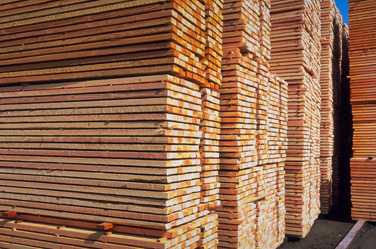|
|
|
||||||||
|
Softwood Lumber Agreement Signed with Canada A contentious dispute with Canada came closer to ending on April 27 with the signing of a framework agreement in Washington, D.C. The beginning of a resolution to a dispute between the United States and Canada over trade in softwood lumber was set in motion on April 27, 2006, when U.S. Trade Representative Rob Portman, Canadian International Trade Minister David L. Emerson, and Canadian Industry Minister Maxime Bernier announced that the two countries had agreed on the core terms of an accord. The Import Administration and the Manufacturing and Services unit within the U.S. International Trade Administration (ITA) played a significant role in negotiating this agreement. (Story continues below.)
The agreement provides a framework within which a final agreement can be reached. When a final agreement is reached, the United States and Canada intend to end all litigation over the issue. The United States agreed to revoke antidumping and countervailing duty orders while the Canadian government agreed to put into place certain export measures that will be applied when the softwood lumber market slumps below US$355 per thousand board feet. (Under current prevailing market conditions, there would be no restriction on Canadian softwood lumber exports.) Special measures will also be put in place to deal with surges in exports from individual Canadian provinces and third countries. The agreement includes provisions to provide effective dispute settlement. It also details how more than US$5 billion in duties, which have been collected since the dispute began, will be distributed. Of that amount, the United States will receive US$1 billion, with 50 percent distributed to U.S. member companies of the Coalition for Fair Lumber Imports and the remainder to “meritorious initiatives in the United States as identified by the U.S. government in consultation with Canada” and a joint initiative benefiting the North American lumber market. The rest of the duties will be returned to the importers of record that initially deposited the duties. “This agreement is in the best interest of communities and workers in both Canada and the United States,” said U.S. Secretary of Commerce Carlos M. Gutierrez, noting that “by allowing workers and industry on each side of the border to compete in a fair environment, the agreement will benefit consumers.” This dispute over softwood lumber began in 2002 after the expiration of the 1996 Softwood Lumber Agreement between the United States and Canada. U.S. companies claimed that stumpage fees charged for lumber harvested on public lands in Canada were set at an artificially low level, which effectively (along with other Canadian governmental programs) created a subsidy. In response, the U.S. Department of Commerce imposed countervailing duties on lumber imported from Canada. The Commerce Department also imposed antidumping duties on Canadian lumber imports. The dispute was subsequently brought before North American Free Trade Agreement panels, the World Trade Organization, and the U.S. Court of International Trade. Softwood lumber includes wood produced from trees such as spruce, fir, and pine. In 2005, imports of softwood lumber from Canada totaled US$7.01 billion and accounted for some 3 percent of trade between the two countries.
|
|
